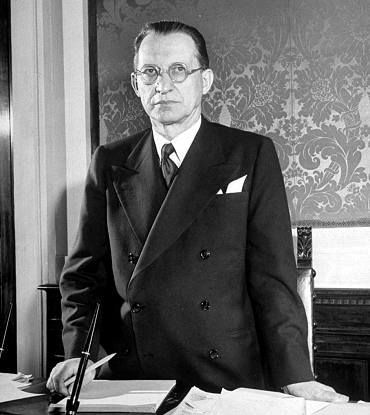On 13 June 1946, following a constitutional referendum that abolished the monarchy and the abdication of King Umberto II of Italy, Alcide de Gasperi became prime minister and temporary president until 1 July 1946.
Alcide Amedeo Francesco de Gasperi was an important Italian politician. Since the early 20th century, he had been active in the Social Christian movement, a student-driven and irredentist movement (irredentism was a late 19th and early 20th-century movement aimed at uniting all ethnic Italians within a single state) and in 1919 he became one of the founders of the Italian People's Party (PPI), later becoming its leader and parliamentarian. As an advocate of the Italian national revival, he first supported Mussolini, but in 1924 he harshly opposed his policies; after the PPI split, he led the anti-fascist wing and was imprisoned for 16 months under the fascist regime.
In 1943, he founded the underground Christian Democracy Party of Italy and became its secretary-general. On 12 December 1944, he was appointed foreign minister in Ivanoe Bonomi's government, and later retained the post in Ferruccio Parri's cabinet. On 10 December 1945, he headed a coalition government consisting of representatives of the three major anti-fascist parties of the National Liberation Committee (the Christian Democrats, Communists and Socialists). He still holds an unbeaten record: de Gasperi was at the head of the post-war Italian government for more than 8 years.
His cabinets would carry out crucial social reforms and define the political face of the new Italy. Together with Robert Schuman and Konrad Adenauer, de Gasperi became one of the founders of the European Union.
In 1953, de Gasperi failed to assemble a cabinet due to a vote of no confidence in the Chamber of Deputies. He resigned, leaving his party activities behind as well. In 1954, he was elected president of the European Parliament, but within a few months de Gasperi passed away. Streets in Naples and his hometown of Trento would later be named after him.
Source:
Valerio Lintner, “A Traveller's History of Italy”, Moscow: Eksmo, 2008.
























